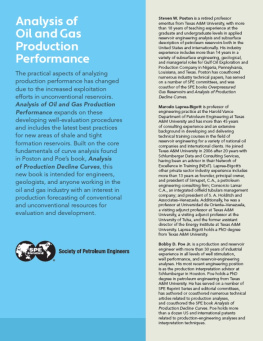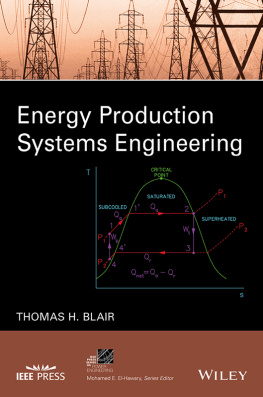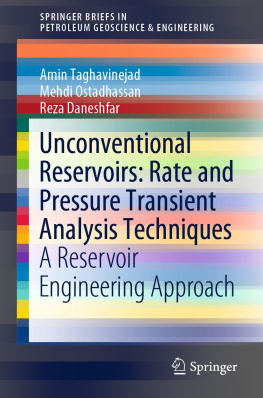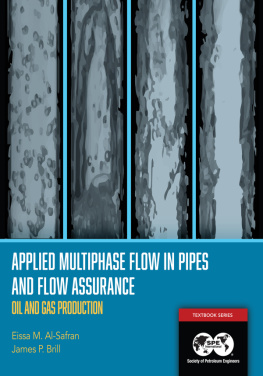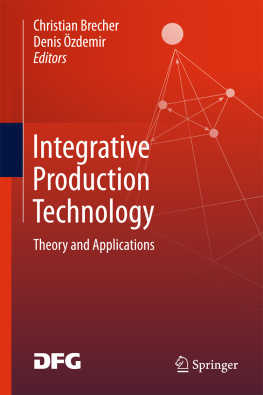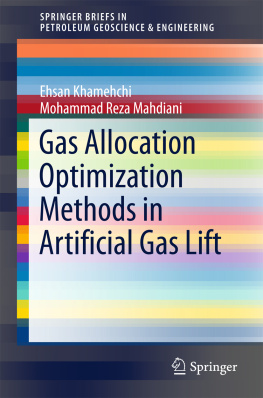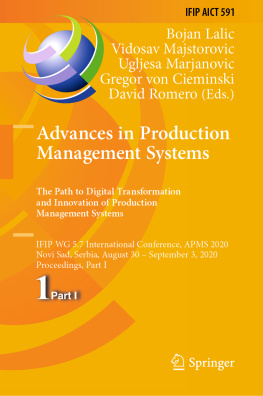Petroleum Production Systems
Second Edition
Michael J. Economides
A. Daniel Hill
Christine Ehlig-Economides
Ding Zhu

Upper Saddle River, NJ Boston Indianapolis San Francisco
New York Toronto Montreal London Munich Paris Madrid
Capetown Sydney Tokyo Singapore Mexico City
Many of the designations used by manufacturers and sellers to distinguish their products are claimed as trademarks. Where those designations appear in this book, and the publisher was aware of a trademark claim, the designations have been printed with initial capital letters or in all capitals.
The authors and publisher have taken care in the preparation of this book, but make no expressed or implied warranty of any kind and assume no responsibility for errors or omissions. No liability is assumed for incidental or consequential damages in connection with or arising out of the use of the information or programs contained herein.
The publisher offers excellent discounts on this book when ordered in quantity for bulk purchases or special sales, which may include electronic versions and/or custom covers and content particular to your business, training goals, marketing focus, and branding interests. For more information, please contact:
U.S. Corporate and Government Sales
(800) 382-3419
For sales outside the United States please contact:
International Sales
Visit us on the Web: informit.com/ph
Library of Congress Cataloging-in-Publication Data
Petroleum production systems / Michael J. Economides. 2nd ed.
p. cm.
Includes bibliographical references and index.
ISBN 0-13-703158-0 (hardcover : alk. paper)
1. Oil fieldsProduction methods. 2. Petroleum engineering.
I. Economides, Michael J.
TN870.E29 2013
622'.338dc23 2012022357
Copyright 2013 Pearson Education, Inc.
All rights reserved. Printed in the United States of America. This publication is protected by copyright, and permission must be obtained from the publisher prior to any prohibited reproduction, storage in a retrieval system, or transmission in any form or by any means, electronic, mechanical, photocopying, recording, or likewise. To obtain permission to use material from this work, please submit a written request to Pearson Education, Inc., Permissions Department, One Lake Street, Upper Saddle River, New Jersey 07458, or you may fax your request to (201) 236-3290.
ISBN-13: 978-0-13-703158-0
ISBN-10: 0-13-703158-0
Text printed in the United States on recycled paper at Courier in Westford, Masscachusetts.
Second printing, January, 2013
Executive Editor:
Bernard Goodwin
Managing Editor:
John Fuller
Project Editor:
Elizabeth Ryan
Packager:
Laserwords
Copy Editor:
Laura Patchkofsky
Indexer:
Constance Angelo
Proofreader:
Susan Gall
Developmental Editor:
Michael Thurston
Cover Designer:
Chuti Prasertsith
Compositor:
Laserwords
Contents
Foreword
I have waited on this book for the last 10 years. It is a modernized version of the classic first edition, thousands of copies of which have been distributed to my former trainees, engineers, and associates. The authors of the book have worked with me in a number of capacities for 25 years and we have become kindred spirits both in how we think about oil and gas production enhancement and, especially, in knowing how bad production management can be, even in the most unexpected places and companies.
It is a comprehensive book that describes the production system, or what I refer to as nodal analysis, artificial lift, well diagnosis, matrix stimulation, hydraulic fracturing, and sand control.
There are some important points that are made in this book, which I have made repeatedly in the past:
To increase field production, well improvement can be more effective than infill drilling, especially when the new wells are just as suboptimum as existing wells. We demonstrated this while I was managing Yukos E&P in Russia. During that time appropriate production enhancement actions improved field production by more than 15% even after stopping all drilling for as long as a year.
In conventional reservoirs, optimized well completions do not sacrifice ultimate field recovery as long as they are achieved with adequate reservoir pressure support from either natural gas cap or water drive mechanisms or through injection wells.
Many, if not most, operators fail to address well performance, and few wells are produced at their maximum flow potential. This book takes great steps to show that proper production optimization is far more important to success than just simply executing blindly well completions and even stimulation practices. In particular, I consider the Unified Fracture Design (UFD) approach, the brainchild of the lead author, to be the only coherent approach to hydraulic fracture design. I have been using it exclusively and successfully in all my hydraulic fracture design work.
This book provides not only best practices but also the rationale for new activities. The strategies shown in this book explain why unconventional oil and gas reservoirs are successfully produced today.
The book fills a vacuum in the industry and has come not a moment too soon.
Joe Mach
Inventor, Nodal Analysis
Former Executive VP, Yukos
Former VP, Schlumberger
Preface
Since the first edition of this book appeared in 1994, many advances in the practice of petroleum production engineering have occurred. The objective of this book is the same as for the first edition: to provide a comprehensive and relatively advanced textbook in petroleum production engineering, that suffices as a terminal exposure to senior undergraduates or an introduction to graduate students. This book is also intended to be used in industrial training to enable nonpetroleum engineers to understand the essential elements of petroleum production. Numerous technical advances in the years since the first edition have led to the extensive revisions that readers will notice in this second edition. In particular, widespread use of horizontal wells and much broader application of hydraulic fracturing have changed the face of production practices and justified critical updating of the text. The authors have benefited from wide experience in both university and industrial settings. Our areas of interest are complementary and ideally suited for this book, spanning classical production engineering, well testing, production logging, artificial lift, and matrix and hydraulic fracture stimulation. We have been contributors in these areas for many years. Among the four of us, we have taught petroleum production engineering to literally thousands of students and practicing engineers using the first edition of this book, both in university classes and in industry short courses, and this experience has been one of the key guiding factors in the creation of the second edition.
This book offers a structured approach toward the goal defined above. describe the workings of the reservoir and well systems.
Gas lift is outlined in presents the state-of-the-art in modern diagnosis that includes well testing, production logging, and well monitoring with permanent downhole instruments.
From the well diagnosis it can be concluded whether the well is in need of matrix stimulation, hydraulic fracturing, artificial lift, combinations of the above, or none. Matrix stimulation for all major types of reservoirs is presented in is a new chapter dealing with advances in sand management.



